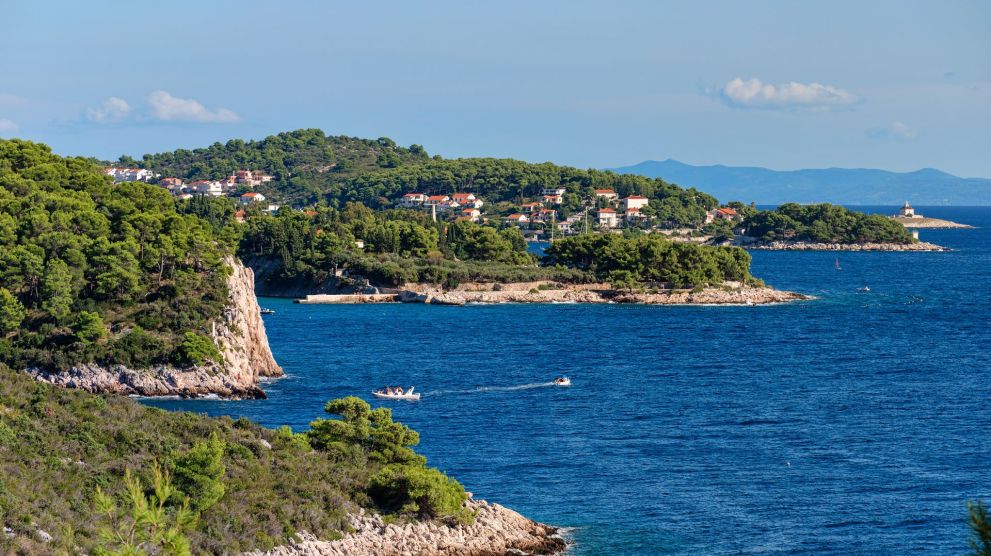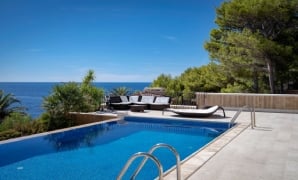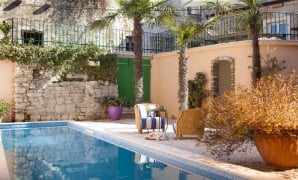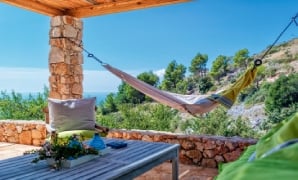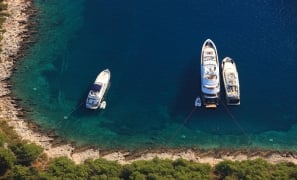Dalmatia and Cologne
Dalmatia has undeniably had an influence on the German town of Cologne to this day.
Marcus Vipsanius Agrippa, a friend of Augustus (born 63 BC) hailed from Dalmatia. His granddaughter Agrippina Minor was born 16 AC in Oppidum Ubiorum. She became the first Roman female imperator. Her birthplace was renamed to Colonia Claudia Ara Agrippinensium, today Cologne (Köln) in 50 AD!
During the 3rd century AD, the area west of the Rhine, the Roman Cologne, was whipsawed by Germanic tribes from the area east of the Rhine. And Diocletian, again a Dalmatian, got involved. He successfully organized the defense of Cologne.
In the meantime, the Greek Cyclades Islands came under the rule of the Roman Empire. The Paros island belongs to the Cyclades Islands, and this is where the first settlers of Hvar came from. Because of Roman domestic conflicts and high taxation, discontent began to rise in the population. Diocletian solved those problems.
Illyricum Superius, the name of the Roman province Dalmatia, sent many good recruits for the Roman army between the 3rd and 6th century AD.
Grapčeva špilja
In the rock caves of Grapče (21x32 m) near Humac on Hvar Island, the Croatian archeologist Grga Novak found rock paintings from the Neolithic times, which showed sailboats. This is the oldest illustration of boats with sails in the world, dating to approximately 4000 years BC. A hint to the trading activities in the region and perhaps with the Aegean.
The first Croatian Revolution - Matija Ivanić
Now I'll suggest something logical.
It's well known that the Romans after occupying new territories quickly realized that governing these territories was more difficult than seizing them. Therefore they used their old principle of bread and games to avoid unrest. Venetians, the next rulers of Hvar Island, also applied this principle. Even if their rule of the island soon became much more tyrannical.
By the way, the Venetians stole the forest along the coast from the Dalmatians. This is why they don't have to sit bare-bottomed in their home marshes today. Venice stands on Dalmatian wooden stakes.
What we are talking about?
Under the rule of Venice Hvar Town was an important harbor for the Venetian fleet. A crucial stop point on the way to the Mediterranean Sea. Please note that the Venetians also used the old Greek sea routes along the Dalmatian coast. Hvar had geopolitical importance.
And then something happened that put the wrench in the Venetian power permanently. For four years starting in 1509 a so-called revolution took place, led by a little Maya the Bee named Matija Ivanič from the fishermen's village Vrboska.
The Venetians were forced to send a punitive expedition to Hvar and to that crazy village of Vrboska. If the stories of the Gallic village in the popular comic weren't tied to Asterix and Obelix, they might as well describe the village of Vrboska today.
Venetian punitive corps confiscated 6000 kegs of anchovies in retribution. This is how we can calculate the yearly production of Vrboska's fish production in those days.
As we said, globalization. The principles of globalization apply to Vrboska as well. Surplus of its fish production was exported to Venice, and the money was used to order valuable paintings. So art connoisseurs are surprised today to find paintings from Paolo Veronese, Tintoretto and Tizian's school in one of the four churches of Vrboska.
In the end, the first Croatian revolutionary leader Matija Ivanić successfully fled to Rome.
About 100 years later, the Venetians also remembered the age-old policy of bread and games. Knowing full well that there wouldn't be peace for a long time on Hvar, they had decided to build the first public theatre in Hvar town.
We have no one to thank for this but Matija.
*Author: Leo Birg
